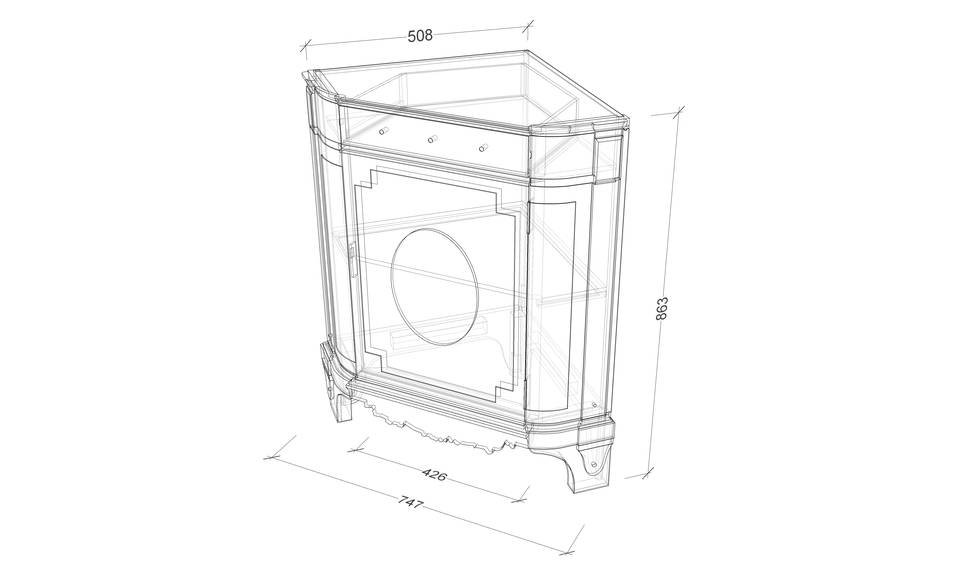Date: 1800–65
Maker: Probably French, possibly Russian
Materials: Oak, conifer, amboyna, purplewood, stained woods, ebony or ebonised wood, box, gilt bronze, statuary marble
Measurements: 89.3 x 80.7 x 54.8 cm
Inv. no. F276
Although this corner-cupboard is not made by Riesener, it has been copied in great detail from an 18th-century cupboard made by him for Marie-Antoinette.
The intention of the copyist was to produce a pair of cupboards, as these were popular items of furniture for a 19th-century room. We do not know, however, whether the copyist’s intentions were honest — to make a reproduction that would match — or whether it was intended to deceive a buyer into thinking that both cupboards were 18th-century in origin.
By 1870 when the 4th Marquess of Hertford bought them they were described as being a pair that had belonged to Marie-Antoinette, and there was no mention of one having been made later. It is unlikely that Hertford would have known that one was later.
The construction of the cupboard is very similar to that of Riesener’s original, but there are some anomalies which make the place and date of its production difficult to confirm.
In many respects the techniques appear to be French, but it is likely that the original cupboard was in Russia in the 19th century and it is possible that the copy may have been made there. The gilt-bronze mounts, however, are most likely to have been produced in France in the middle of the 19th century, suggesting that Paris was the place of production.
The mounts on the copy are of a very high standard, but at some stage in the history of the two pieces the mounts have been partially swapped over.
In a kind of ‘mix-and-match’ process, some of the original 18th-century mounts have been put on the copy cupboard, and some of the copy mounts placed on Marie-Antoinette’s cupboard. This suggests that there was indeed an intention to deceive at some stage, as it is a well-known technique for smoothing over the differences between an old and a new piece of furniture and making it much harder to spot the copy.
This makes the copy cupboard a fascinating document in the history of taste and collecting. Furniture that had belonged to Marie-Antoinette became incredibly sought after in the 19th century, and obviously two cupboards which had once belonged to the ill-fated queen would have been much more valuable than one. Whether something is a ‘fake’ or a ‘reproduction’, however, is not always easy to prove.
We should keep in mind that many honest reproductions were made by cabinetmakers who appreciated the superb designs of Riesener and his contemporaries, and that replica copies of French 18th-century furniture were extremely fashionable in the last third of the 19th century.
For more information: Jacobsen, H. et al., Jean-Henri Riesener. Cabinetmaker to Louis XVI and Marie-Antoinette. Furniture in the Wallace Collection, Royal Collection and Waddesdon Manor, London, 2020, no. 24.
